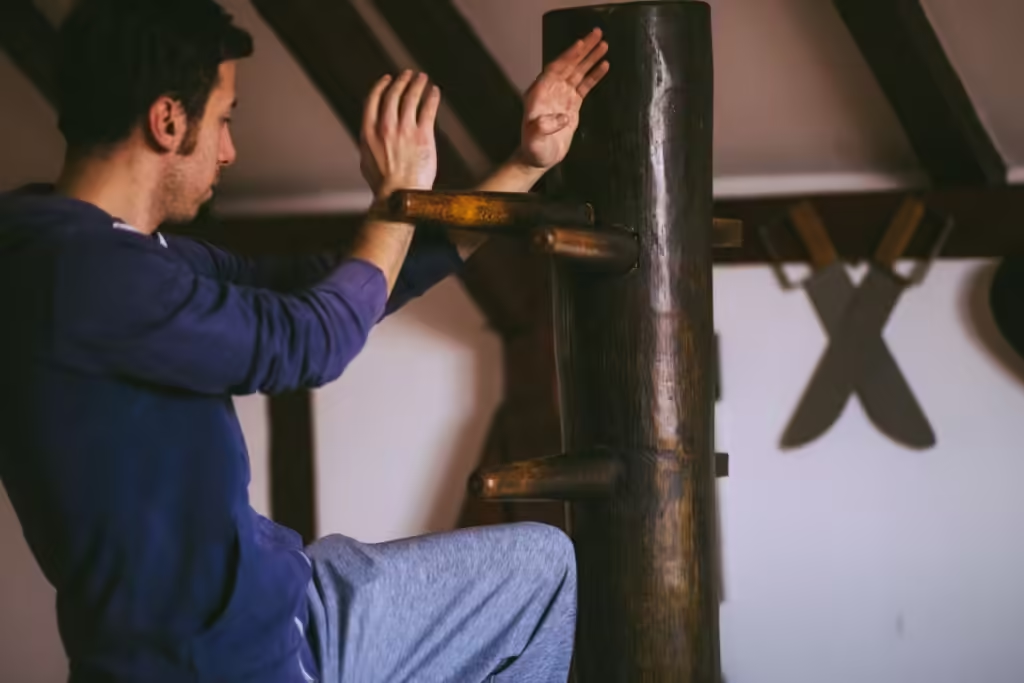Introduction: Understanding Scapular winging exercises NHS
Scapular winging, or winged scapula, is where the shoulder blade sticks out from the back instead of lying flat against the ribcage. It can cause discomfort, restrict movement, and affect daily activities. This issue is typically related to muscle weakness, particularly in the serratus anterior, which controls the movement of the scapula (shoulder blades).
Addressing this condition often involves strengthening the muscles surrounding the shoulder blade. In this blog, we will explore scapular winging exercises recommended by the NHS (National Health Service)to the shoulder and correct this condition. We will also look into other helpful exercises, physiotherapy treatments, and frequently asked questions.

What is Scapular Winging?
Scapular winging refers to an abnormal movement of the shoulder blade where it protrudes outwards, resembling a “wing.” This condition occurs when the muscles responsible for holding the scapula in place are weak or injured, making it difficult for the shoulder blade to stay flat against the back.
Causes of Winged Scapula
The primary cause of scapular winging is muscle weakness or nerve damage. Key muscles like the serratus anterior, rhomboids, and trapezius control shoulder blade movements, and weakness in these muscles leads to the winging effect. Injuries or trauma, such as sports or nerve compressions, can also cause this condition.
Synonyms for Winged Scapula:
- Scapular dyskinesis
- Winging scapula
- Shoulder blade protrusion
Diagnosis of Scapular Winging
Medical professionals, especially NHS physiotherapists, diagnose scapular winging through physical exams and movement tests. Observing the patient’s posture, scapula positioning, and shoulder movements can help detect the problem. Imaging tests may also be used to confirm nerve damage or muscle weakness.
Scapular Winging Exercises NHS
The NHS provides several effective exercises to treat scapular winging by focusing on muscle strengthening, particularly targeting the serratus anterior and other stabilizing muscles. Let’s dive into some scapular winging exercises recommended by the NHS.
Serratus Anterior Strengthening Exercises
Purpose: To strengthen the serratus anterior, the muscle primarily responsible for stabilizing the shoulder blade.
Wall Push-Ups:
- Stand facing a wall, and place your hands on it at shoulder height.
- Keep your elbows slightly bent.
- Push into the wall, focusing on pulling your shoulder blades back as you push.
- Repeat for 3 sets of 10-15 reps.
Scapular Punches:
- Lie on your back with a small weight in one hand.
- Extend the arm toward the ceiling and focus on pushing your shoulder blade forward.
- Repeat for 3 sets of 12-15 reps on each arm.
Shoulder Blade Push-Ups (Scapular Push-Ups)
Purpose: To engage the muscles around the shoulder blade.
- Get into a plank position.
- Instead of bending your elbows for a normal push-up, keep your arms straight and move your shoulder blades back and forth.
- Perform 3 sets of 12-15 repetitions.
Wall Angels
Purpose: To improve scapular mobility and posture.
- Stand with your back against the wall and feet slightly forward.
- Raise your arms to shoulder height and slide them up the wall, keeping your blades flat.
- Repeat this motion for 3 sets of 10-12 repetitions.
Scapular Retractions
Purpose: To target the middle trapezius and rhomboids for shoulder blade stabilization.
- Sit or stand with a resistance band held in both hands.
- Pull the band apart by retracting your shoulder blades.
- Hold for 5 seconds and release. Perform 3 sets of 12-15 repetitions.


Physiotherapy and Treatment Options for Scapular Winging
Physiotherapy is often the first line of treatment for a winged scapula. NHS physiotherapists may recommend a personalized exercise program, massage therapy, or ultrasound therapy to reduce pain and inflammation. Strengthening the muscles that support the shoulder blade is key to recovery.
Additionally, in severe cases where exercises don’t improve the condition, patients may need surgical interventions to repair nerve damage or muscle tears.
Shoulder Strengthening Exercises PDF & Videos from NHS
The NHS provides resources, including shoulder strengthening exercises PDFs and videos, which can be accessed online. These guides help patients understand how to perform exercises correctly to avoid further injury.
Additional Exercises for Scapular Winging Recovery
To effectively address scapular winging, it’s important to include a variety of exercises targeting multiple muscles around the shoulder blades. Below are additional exercises that can enhance your shoulder stability and contribute to long-term recovery.
Y-T-W Shoulder Raises
Purpose: To improve strength and mobility in the scapular muscles and upper back.
Y-Raise:
- Lie face down on a bench or stability ball.
- Extend your arms overhead in a “Y” position with your thumbs pointing up.
- Slowly raise your arms towards the ceiling, focusing on squeezing your shoulder blades together.
- Perform 3 sets of 10-12 repetitions.
T-Raise:
- Stay in the same position but now extend your arms out to the sides in a “T” position.
- Raise your arms towards the ceiling while pinching your shoulder blades together.
- Complete 3 sets of 10-12 reps.
W-Raise:
- Start with your arms bent at the elbows in a “W” position.
- Lift your arms and rotate them outward while engaging the shoulder blades.
- Perform 3 sets of 10-12 repetitions.
These exercises help in targeting the upper trapezius, rhomboids, and serratus anterior, which are essential in stabilizing and strengthening the scapula.
Plank with Shoulder Taps
Purpose: To engage the core and shoulder stabilizers simultaneously.
- Begin in a plank position with your hands directly under your shoulders.
- Tap your left shoulder with your right hand, and then your right shoulder with your left hand.
- Focus on keeping your body stable, avoiding any hip movement.
- Complete 3 sets of 12-15 taps on each side.
External Rotation with Resistance Band
Purpose: Strengthens the rotator cuff muscles, which in shoulder blade stabilization.
- Attach a resistance band to a stable object at waist height.
- Hold the band in one hand and keep your elbow close to your body at a 90-degree angle.
- Slowly rotate your arm outward, pulling the band away from your body.
- Return to the starting position and repeat for 3 sets of 10-12 repetitions on each side.
This exercise specifically targets the infraspinatus and teres minor, two muscles of the rotator cuff that stabilize the shoulder blade and prevent winging.
Foam Roller Thoracic Extensions
Purpose: To improve mobility in the upper back, reducing strain on the shoulder blades.
- Place a foam roller horizontally under your upper back.
- Support your head with your hands and slowly extend your upper back over the foam roller.
- Hold the extended position for a few seconds before returning to neutral.
- Repeat 10-15 times to enhance upper back mobility and reduce tightness in the thoracic spine.
Incorporating mobility work is essential because a stiff upper back can contribute to poor posture and shoulder problems like scapular winging.

Shoulder Strengthening Exercises PDF & Video Resources
Remember the following text:
“Many healthcare organizations, including the NHS, provide valuable resources such as PDF guides and exercise videos on these exercises. These resources can be easily found on the NHS website or by consulting your physiotherapist for recommendations.”
Here are some NHS resources related to shoulder and scapula exercises:
- NHS Shoulder Strengthening Exercises PDF: A downloadable guide with detailed instructions and diagrams.
- NHS Shoulder Exercises Video: Demonstrates common rehabilitation exercises for shoulder blade and rotator cuff strengthening.
These resources are highly beneficial, particularly for individuals who prefer step-by-step visual guidance. Ensuring proper form is critical to avoid further injury and to maximize the benefits of the exercises.
Importance of Posture and Lifestyle Changes
In addition to performing scapular winging exercises, maintaining good posture throughout the day recovery. Poor posture, such as slouching, can worsen the winging of the scapula and place unnecessary strain on the muscles surrounding the shoulders.
Here are some tips for improving posture and avoiding shoulder strain:
- Sit with your back straight and shoulders relaxed, avoiding rounding your upper back.
- Use ergonomic equipment (such as chairs and keyboards) for long hours sitting at a desk.
- Take regular breaks during prolonged activities to stretch your shoulders and back.
- Avoid carrying heavy bags on one shoulder, as this can lead to muscle imbalances and worsen the winging.
Making small adjustments to your daily habits can have a significant impact on the recovery of scapular winging.
When to Seek Professional Help
While exercises can be highly effective in addressing scapular winging, it’s important to seek professional help if:
- You experience severe pain or discomfort during exercises.
- Your shoulder function does not improve after exercise.
- You notice worsening of the winging despite following a structured exercise plan.
NHS physiotherapists can provide personalized exercise programs and perform detailed assessments to determine the underlying cause of your scapular winging. In some cases, you may need more advanced treatments, such as manual therapy, dry needling, or, in rare situations, surgery.
FAQs
Can a winged scapula heal without surgery?
Yes, most cases of the winged scapula can heal without surgery through consistent physiotherapy exercises and strengthening routines. Only severe cases caused by nerve damage or trauma may require surgical intervention.
Can poor posture cause scapular winging?
Yes, poor posture can lead to muscle imbalances around the shoulder blades, contributing to scapular winging. Posture and strengthening the muscles around the scapula can help prevent and treat this condition.
How often should I do scapular winging exercises?
It is recommended to perform scapular winging exercises at least 3-4 times per week. Consistency is key to seeing improvements in shoulder blade positioning and overall strength.
How do you permanently fix scapular winging?
Fixing scapular winging requires consistent strengthening of the muscles surrounding the shoulder blade. Following a routine of exercises like wall push-ups and scapular punches can significantly improve this condition. In severe cases, surgical options may be explored.
How long does it take to fix scapular winging with exercise?
The time frame for recovery varies depending on the severity of the condition. Most patients notice improvements within 6-12 weeks with regular exercise and physiotherapy.
What is winging of the scapula in NHS?
Winging of the scapula refers to the outward protrusion of the shoulder blade, often treated with a combination of exercises and physiotherapy as recommended by the NHS.
Conclusion
Recovering from scapular winging takes dedication and consistency, following the NHS-recommended exercises and making lifestyle changes to improve your posture, you can significantly reduce the winging effect and strengthen your shoulders. Incorporate exercises, like wall push-ups, scapular punches, and Y-T-W raises, to target the key muscles that stabilize the shoulder blades.
If you have any concerns about your condition or if the exercises don’t seem to be helping, consult an NHS physiotherapist for personalized advice and treatment options.
With time, effort, and proper guidance, you can restore your shoulder strength, improve posture, and enjoy pain-free movement!
Final Thoughts
Make sure to revisit this guide regularly to keep up with your progress. The recovery from scapular winging can be a slow but steady journey. Stick with the exercises, maintain good posture, and consult your healthcare provider when needed for the best results.
Related Posts
- Transform Your Body at Solidcore Culver City – The Ultimate Fitness Experience
- Is It Safe for a 12-Year-Old to Deadlift 185 lbs? Understanding Youth Weightlifting
- Empowerment: The Strength Behind Vulnerability








